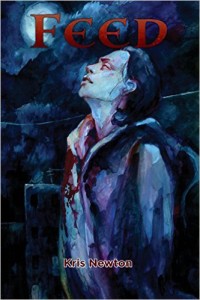
By far, my longest running game has been in the classic World of Darkness, particularly Vampire: The Masquerade. At the time, it seemed like a fresh, alternative system and setting. It also seemed a little transgressive, it was a game that I wasn’t supposed to be playing, a game that allowed me to explore stories and ideas that were unheard of in my normal superhero games.
As great as it was, I always seemed to bump into limitation of the setting, the system or how the game defined vampirism. My friends and I explored house rules, not for the benefit of the game, but because we wanted to emulate what we saw in movies and TV. As the game got older, they branched out with other clans, new bloodlines, all attempting to offer new breeds of vampire.
Over time, the game began to feel just like a supernatural-themed superhero game, and while there’s nothing wrong with playing vampires like that, it isn’t how I wanted to play them. Even the new game line, while great and much more of a “build it yourself” game, still has a foundation of what came before.

Not long ago, I came across a game called Feed, which like Vampire, seems like a fresh and innovative game system. Players and GMs will have to put in a little work before they can play though; even before you create a character, your group will have to create a Strain. A Strain is, essentially, what vampirism is in your world.
Each Strain is composed of blank elements; Aging (your vampire can slowly decompose, have a mortal lifespan, be immortal, or slowly fill up with disease until you eventually burst and spread the infection), Appearance (your vampire can look perfectly normal, have some feature that sets you apart suck as pale skin or unusual eyes, be completely monstrous, or possess the Mark of Cain- visible only in daylight), Cure (players decide if there is a cure and how one must go about it), Feeding (do you have traditional fangs, or fangs like a syringe, a horrific leech-mouth, or do you have no special abilities to aid your feeding?), Physiology (you can be living, undead, dead or have a dual form), Transmission (airborne, infectious feeding, remote infection, or spontaneous infection), Gifts (personal magnetism, physical prowess, regeneration, spiritual prowess or luck), and finally Weaknesses (behavioral restrictions, telltale physical features, special vulnerabilities and wards).
Now I said it was “work,” but really, it’s a lot of fun! The options provided are great as well as varied, but I’m sure creative groups could come up with others. You could even have a few types of vampire in the same world, why settle on just one? After that, you create your character. This process is just a creative and fun as creating a Strain! Character creating is as simple as answering sixteen questions and assigning dice values to them.
The game borrows concepts from narrative games like Fate and quick dice mechanics like Save Worlds to create a really fun, fast paced game with enough depth to keep players involved with the “game aspects” while still allowing as much narrative freedom as I’ve seen in a vampire game yet. My only hang-up is the games use of a three-sided die (not the easiest to find), otherwise this is a game I suggest any vampire fan sink their teeth into!
